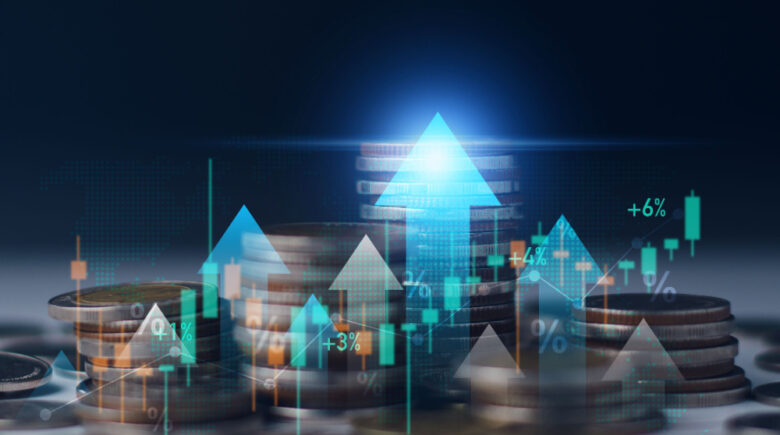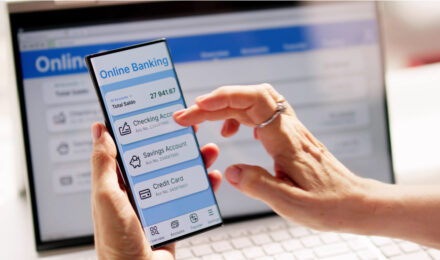High interest rates on loans increase the overall cost of your debt. Whether you’re financing a house, a car, or carrying a credit card balance, higher interest rates mean larger payments without any increase in the value of what you’re purchasing. If you have credit card debt, high interest rates can make it feel like you’re constantly paying but never making any real progress.
However, interest rates aren’t always negative. When you’re earning interest, they can work in your favor. Interest rates differ from dividends. For instance, if you place money in a high-yield savings account, you might earn up to 5% annually, typically paid monthly. The exact rate may vary slightly depending on the institution holding your money, but it remains relatively stable. On the other hand, dividends are paid to shareholders, and their payout can fluctuate greatly depending on the company’s performance.
Tips for Keeping Interest Payments Low
Avoid Carrying a Credit Card Balance
One of the best ways to sidestep paying high interest is by not carrying a balance on your credit card. When you maintain a high balance, it can cost you in more ways than just interest.
Maxed-out credit cards can lower your credit score. A lower credit score can lead to higher interest rates on other types of loans, making future borrowing even more expensive.
Monitor Your Credit Score
Even secured loans, such as mortgages or car loans, will become more costly if your credit score is damaged by high credit card balances.
You can improve your credit score through careful credit card use. Try putting regular expenses, like rent or utility bills, on a credit card you don’t use often. Pay the bill off in full each month to boost your credit score with consistent, positive activity.
Transfer Balances to Lower Interest Payments
As your credit score improves, you’ll start receiving more credit offers. Take advantage of those offering 0% annual percentage rate (APR) for at least 12 months. Transfer high-interest debt to these cards and pay off the balance within the promotional period to minimize interest charges.
Credit Cards: A Useful Tool
While avoiding credit cards entirely may prevent interest payments, having a few credit cards can be helpful for various life situations, like renting cars, booking hotels, or reserving flights.
Once you’ve built up a good credit score, you can also earn rewards from some credit cards through points or bonuses. Be cautious, though—don’t spend money just to earn points. But if you can buy your groceries and use the points for a dream vacation, it’s a win-win.
Understanding Amortization
The interest you pay is often reflected in the amortization schedule attached to your loans. If you have a mortgage, you’ve likely seen an amortization table. As long as your loan doesn’t carry a prepayment penalty, making extra payments toward the principal can significantly reduce the total interest you’ll pay over the life of the loan.
Once your credit card debt is under control—or even paying you back through rewards—consider looking at the interest on your car and home loans. Home loans, in particular, are heavily front-loaded with interest. In the first 10 years of a 30-year mortgage, only a small portion of your payment goes toward the principal.
If possible, consider refinancing to a 15-year loan to save a substantial amount on interest. Another option is to make just one extra payment per year, which can also reduce the total interest paid over time.
Car loans, while less front-loaded with interest, might not offer as much savings by paying them off early. If your budget is tight and you want to reduce overall interest payments, prioritize paying down your home loan. However, if your financial situation changes and you need to reduce your monthly expenses, refinancing a newer car loan for a longer term could provide some relief.
Refinancing a car loan does come with drawbacks, such as extending the time you need full coverage insurance and possibly paying more interest due to the longer loan term. However, car loans are more flexible, and refinancing a car is often faster than refinancing a mortgage.
How to Earn Interest
It’s wise to have two types of savings accounts. First, maintain an emergency savings account that’s easily accessible. Traditional banks often don’t offer high interest rates, but having quick access to this money is more important for emergencies.
The amount to save depends on your personal situation, but a good starting point is to have enough to cover at least one month’s rent or mortgage. For instance, if your monthly housing cost is $1,500, aim to save at least that amount so you can cover essential expenses during tough times.
To earn more interest, set up a high-yield savings account. Be mindful of any fees associated with transferring money or paying bills from this account. While earning interest is great, you don’t want fees to cancel out your gains.
Many high-yield accounts are offered by online-only banks, which may take a few days to transfer money. Once your basic emergency fund is in place, you can route extra savings from your brick-and-mortar bank into this higher-interest account.
Though interest rates on these accounts rarely exceed 5%, if you have room in your budget for savings, it’s a good idea to let your money work for you by earning some interest over time.
This revision simplifies the article while making it more engaging and easier to follow. It emphasizes practical advice and strategies for managing and leveraging both high interest rates and debt.
High interest rates on loans increase the overall cost of your debt. Whether you’re financing a house, a car, or carrying a credit card balance, higher interest rates mean larger payments without any increase in the value of what you’re purchasing. If you have credit card debt, high interest rates can make it feel like you’re constantly paying but never making any real progress.
However, interest rates aren’t always negative. When you’re earning interest, they can work in your favor. Interest rates differ from dividends. For instance, if you place money in a high-yield savings account, you might earn up to 5% annually, typically paid monthly. The exact rate may vary slightly depending on the institution holding your money, but it remains relatively stable. On the other hand, dividends are paid to shareholders, and their payout can fluctuate greatly depending on the company’s performance.
Tips for Keeping Interest Payments Low
Avoid Carrying a Credit Card Balance
One of the best ways to sidestep paying high interest is by not carrying a balance on your credit card. When you maintain a high balance, it can cost you in more ways than just interest.
Maxed-out credit cards can lower your credit score. A lower credit score can lead to higher interest rates on other types of loans, making future borrowing even more expensive.
Monitor Your Credit Score
Even secured loans, such as mortgages or car loans, will become more costly if your credit score is damaged by high credit card balances.
You can improve your credit score through careful credit card use. Try putting regular expenses, like rent or utility bills, on a credit card you don’t use often. Pay the bill off in full each month to boost your credit score with consistent, positive activity.
Transfer Balances to Lower Interest Payments
As your credit score improves, you’ll start receiving more credit offers. Take advantage of those offering 0% annual percentage rate (APR) for at least 12 months. Transfer high-interest debt to these cards and pay off the balance within the promotional period to minimize interest charges.
Credit Cards: A Useful Tool
While avoiding credit cards entirely may prevent interest payments, having a few credit cards can be helpful for various life situations, like renting cars, booking hotels, or reserving flights.
Once you’ve built up a good credit score, you can also earn rewards from some credit cards through points or bonuses. Be cautious, though—don’t spend money just to earn points. But if you can buy your groceries and use the points for a dream vacation, it’s a win-win.
Understanding Amortization
The interest you pay is often reflected in the amortization schedule attached to your loans. If you have a mortgage, you’ve likely seen an amortization table. As long as your loan doesn’t carry a prepayment penalty, making extra payments toward the principal can significantly reduce the total interest you’ll pay over the life of the loan.
Once your credit card debt is under control—or even paying you back through rewards—consider looking at the interest on your car and home loans. Home loans, in particular, are heavily front-loaded with interest. In the first 10 years of a 30-year mortgage, only a small portion of your payment goes toward the principal.
If possible, consider refinancing to a 15-year loan to save a substantial amount on interest. Another option is to make just one extra payment per year, which can also reduce the total interest paid over time.
Car loans, while less front-loaded with interest, might not offer as much savings by paying them off early. If your budget is tight and you want to reduce overall interest payments, prioritize paying down your home loan. However, if your financial situation changes and you need to reduce your monthly expenses, refinancing a newer car loan for a longer term could provide some relief.
Refinancing a car loan does come with drawbacks, such as extending the time you need full coverage insurance and possibly paying more interest due to the longer loan term. However, car loans are more flexible, and refinancing a car is often faster than refinancing a mortgage.
How to Earn Interest
It’s wise to have two types of savings accounts. First, maintain an emergency savings account that’s easily accessible. Traditional banks often don’t offer high interest rates, but having quick access to this money is more important for emergencies.
The amount to save depends on your personal situation, but a good starting point is to have enough to cover at least one month’s rent or mortgage. For instance, if your monthly housing cost is $1,500, aim to save at least that amount so you can cover essential expenses during tough times.
To earn more interest, set up a high-yield savings account. Be mindful of any fees associated with transferring money or paying bills from this account. While earning interest is great, you don’t want fees to cancel out your gains.
Many high-yield accounts are offered by online-only banks, which may take a few days to transfer money. Once your basic emergency fund is in place, you can route extra savings from your brick-and-mortar bank into this higher-interest account.
Though interest rates on these accounts rarely exceed 5%, if you have room in your budget for savings, it’s a good idea to let your money work for you by earning some interest over time.
This revision simplifies the article while making it more engaging and easier to follow. It emphasizes practical advice and strategies for managing and leveraging both high interest rates and debt.




